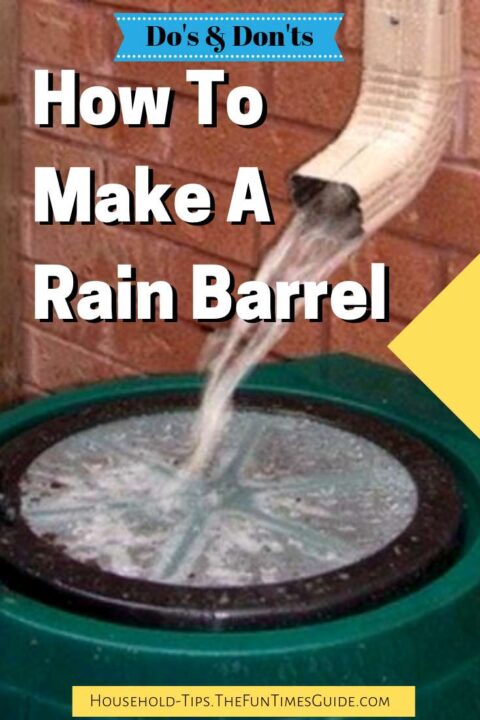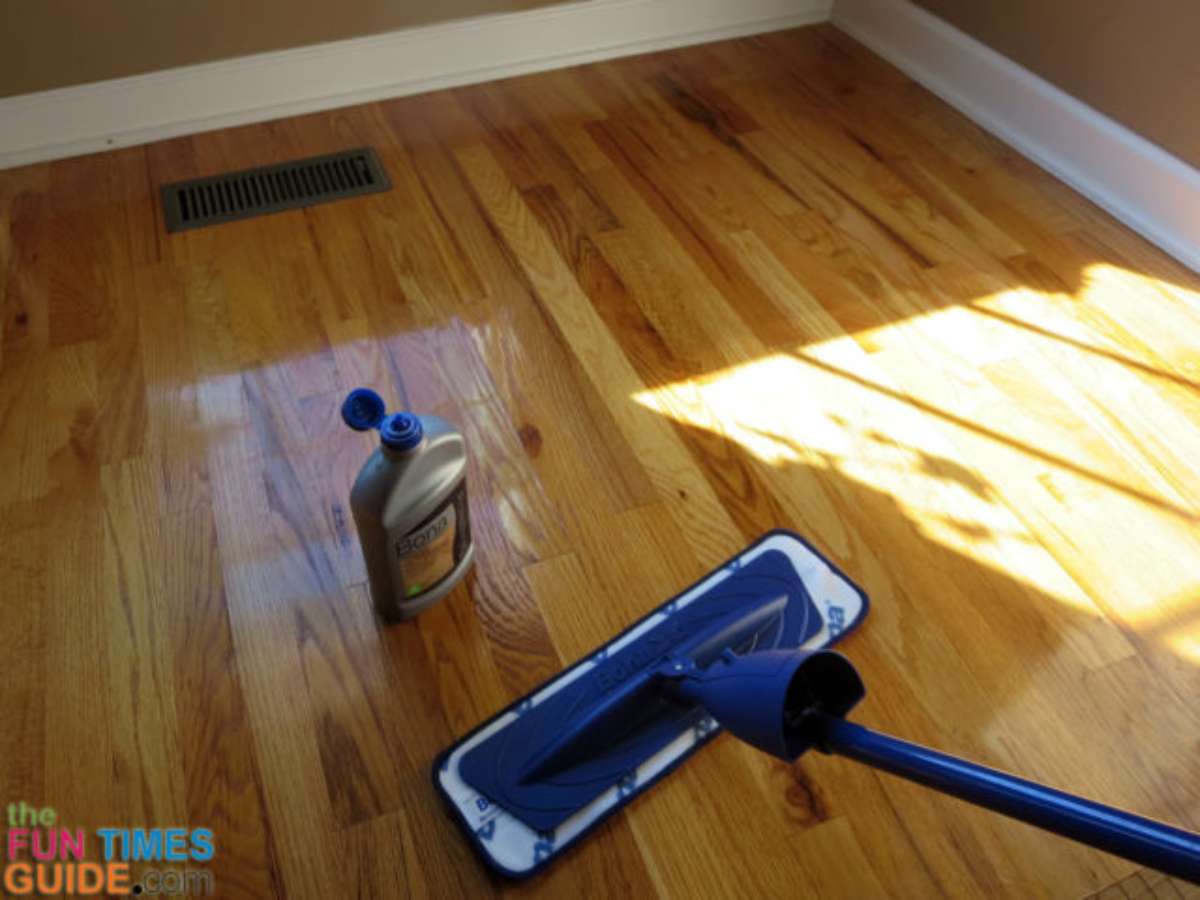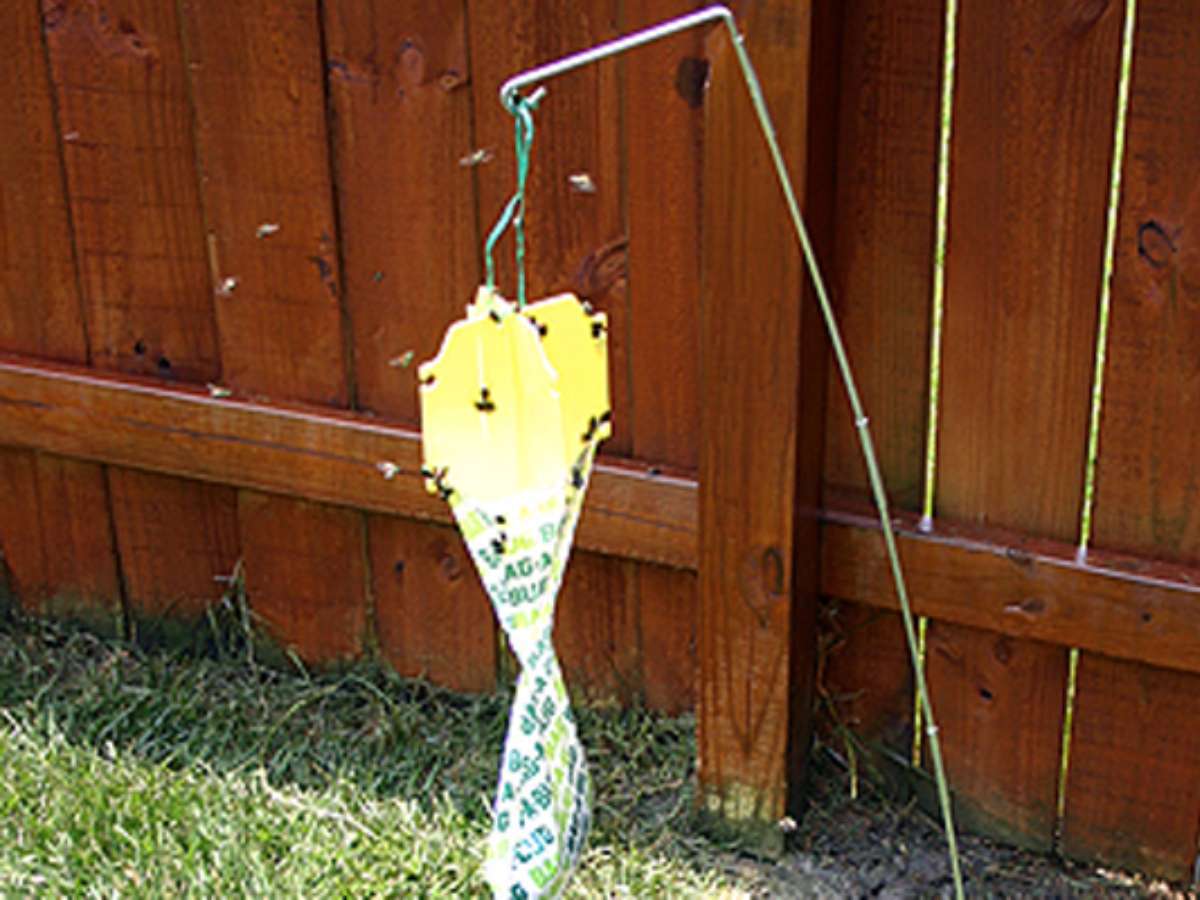Rain barrels are all the rage these days!
And rightly so…
Did you know that 623 gallons of water can be harvested from 1 inch of rain on a 1,000-square-foot roof?
In terms of rain barrels, a typical 1/2-inch rainfall will fill a 55-gallon barrel.

So while everyone is rushing to make rain barrels right now, I think it’s wise to slow down and think through the entire process first. That way, your first rain barrel will be your best rain barrel.
Today I’m going to show you:
- The most important do’s and don’ts you should be focusing on
- The biggest DIY rain barrel mistakes and how to avoid them
- How to make a rain barrel yourself
- How to prevent algae from growing in your rain barrel
- How to keep mosquitoes from using your rain barrel as a breeding ground
- How to winterize a rain barrel and keep it protected during the cold winter months
- How to fix a smelly rain barrel yourself
Did You Know?… Some cities will even give you a FREE rain barrel! Check with your local water department to see if they have any free rain barrel kits available for local residents. Los Angeles, Tampa, and Cleveland are a few of the cities with free rain barrel programs.
Rain Barrel Do’s & Don’ts

DO keep pets and children safe (as well as slugs, insects, and rodents out) by making sure your rain barrel has a sturdy top.
DON’T cook with or drink water that’s been collected in a rain barrel.
DO make sure all openings on your rain barrel are screened to keep out mosquitoes. If you don’t want to use a sturdy cover, this mesh rain barrel cover keeps mosquitoes and debris out of your barrel quite well.
DON’T use old barrels that formerly held something toxic.
DO make sure your rain barrel adapts for overflow. Either direct excess rainwater away from the barrel OR link multiple barrels together. A rain barrel diverter is the most popular option — it keeps the collected rain water from overflowing when your barrel is full by diverting the water back to your downspout instead of into the barrel.
DON’T allow rainwater to freeze in the barrel because it can expand and damage the barrel.
DO use this Rainwater Collection Calculator to determine the average amount of rainfall that you can physically collect based on the average rainfall where you live. (Once you know your average rainfall, use this formula: 1″ of rainfall over 1,000 sf will yield 623 gallons.)
This video provides a good summary of the 7 biggest rain barrel mistakes that people make:
This next video shows some outside-the-box ideas when using a rain barrel to harvest rain water:
How To Make A Rain Barrel Instructions
Here are some fun and easy ways to make your own rain barrel the right way:
- Build Your Own Rain Barrel (Family Handyman)
- Super Cheap & Easy DIY Rain Barrel (Green Living Guide)
- How To Make A Rain Barrel Step-By-Step (Young House Love)
- 3 Cheap Rain Barrels That Actually Look Nice (Green Living Guide)
- How To Set Up A Rain Barrel System At Home (Treehugger)
- Build Your Own Rain Barrel (Mid-America Regional Council)
- 3 Ways To Make A Rain Barrel For Less Than $10 (Green Living Guide)
This is a great video that shows how to recycle rain water — rather than letting it become wastewater:
4 Ways To Fix A Smelly Rain Barrel Water
If the water in your rain barrel gets starts to smell (or turns green), you have 3 good options:
Option #1: Add goldfish! They keep the water very clean by eating the algae that turns it green. Keep in mind… when using goldfish as a temporary way to remove algae, don’t just dump the goldfish in a stream or river — because they’re invasive. Instead, give them to a child with a fish tank, or return them to the store.
Option #2: Add barley-straw pellets. They will kill algae — but won’t harm plants.
Option #3: Pour a small amount of vinegar into the water. It should clear it up relatively quickly.
Option #4: Pour a bottle of 3% hydrogen peroxide into the water. According to Captain Patio, this eliminates any strong odors while also destroying the organisms responsible for the stench.
Also good to know…
- The goldfish and the vinegar options (separately) will also kill mosquito larvae — so you won’t have to deal with mosquitoes any longer!
- Many say that rice fish are better than goldfish in rain barrels because they’re smaller — plus, they don’t mind when the temperatures get lower and higher than normal.
How To Protect Your Rain Barrel In The Winter
If you get below-freezing temperatures where you live, then your safest option is to drain the rain barrel before the very first freeze of the season occurs.
Here is a good summary of your options, based on how cold your winters are.
This video shows how to properly winterize a rain barrel:
A good read… Top 10 Winter Uses For Rainwater
More DIY Rain Barrel Tips
Here are a few more tips to help you make the best rain barrel set-up for your space:
- How to make apartment-sized rain barrels for water collection. You could also just leave a few jugs or buckets out during the rain to collect rain water that you can use later — just be sure to place clean containers in areas with the heaviest rainfall runoff.
- A step-by-step tutorial for how to fix a cracked rain barrel. Sometimes all it takes is a piece of fabric and some silicone caulk to repair a crack. (Good rain barrel winterization tips here, too!)
- I love this idea of using an everyday plastic trash can and its matching lid as a cheap and easy rain barrel.
- An amazing collection of helpful tips from someone who’s been using rain barrels for over 10 years. Learn why and how to use a diverter to connect a rain barrel to a downspout, why and how to raise your rain barrels higher, the easiest ways to transport the rain barrel water, and many more great ideas from The Gardener Wife.
If you found this post helpful, it would mean the world to me if you would share with others on Pinterest:





